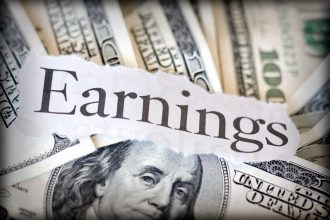Homebuilder stocks are relatively “cheap” even after surging this year, and represent a pocket of the U.S. equities-market rally that extends beyond the Big Tech sector as a recession does not appear imminent, according to DataTrek Research.
“This is not a one-trick (Tech only) market,” wrote DataTrek co-founder Nicholas Colas in a note emailed Tuesday.
The SPDR S&P Homebuilders ETF
XHB,
has jumped almost 32% so far this year through Tuesday, according to FactSet data. Last year the ETF tanked in the broad-market selloff as the Federal Reserve aggressively hiked interest rates to battle high inflation, with its shares tumbling 29.7%.
“Can a U.S. recession really be just around the corner if homebuilding stocks just made a new” 52-week high? Colas said in the note. “The short answer,” he wrote, “is ‘no, obviously not’, but there’s more to the story than that.”
Colas also pointed to improving homebuilder sentiment on “decent demand and limited supply of existing homes.” Meanwhile, inflation in materials has declined from pandemic-era levels, he said.
Sales of newly built homes in the U.S. jumped in May, surging 12.2% to an annual rate of 763,000 from a revised 680,000 in April, the Census Bureau and U.S. Department of Housing and Urban Development announced jointly Tuesday.
“This was a massive surprise,” said Louis Navellier, chief investment officer of Navellier & Associates, in emailed commentary Tuesday. “Between lower home prices and consumers getting used to current mortgage rates, the housing market appears to be in the midst of a robust recovery.”
Read: U.S. new home sales surge in May for third straight month
The median price of a new home sold in the U.S. in May was $416,300, down from as high as $496,800 in October, according to the Federal Reserve Bank of St. Louis’s website, which cites data from the Census Bureau and Department of Housing and Urban Development.
The housing market stands to benefit from the Fed potentially being close to ending its interest rate hikes.
“If the Fed really is near the end of their current tightening cycle, then interest rates should decline in 2024 and beyond and support demand over the longer term,” said Colas.
While Big Tech has driven the S&P 500’s gains this year, the jump in homebuilder stocks shows other parts of the U.S. equity market are also rallying in 2023, according to Colas. The S&P 500 is up 14% this year through Tuesday, lagging behind the SPDR S&P Homebuilders ETF’s massive gains.
“They don’t even have above-average valuations,” Colas said of homebuilders.
The top 10 holdings of the SPDR S&P Homebuilders ETF have an average valuation of 14.6x their 12-month forward-earnings estimates, remaining cheap relative to the market, according to the DataTrek note. By way of comparison, the S&P 500 trades at 18.6x, the note shows.
The ETF’s largest exposures include Carrier Global Corp.
CARR,
Lennar Corp.
LEN,
Owens Corning
OC,
Trane Technologies plc
TT,
NVR Inc.
NVR,
PulteGroup Inc.
PHM,
D.R. Horton Inc.
DHI,
Builders FirstSource Inc.
BLDR,
Lowe’s Cos.
LOW,
and Allegion plc
ALLE,
as of June 26, according to the fund’s holdings data on the website of State Street Global Advisors.
The average valuation for the top 10 holdings cited in the DataTrek note had included Carlisle Cos.
CSL,
instead of Allegion. Carlisle remained among the SPDR S&P Homebuilders ETF’s holdings as recently as June 26, data on State Street’s website show.
Shares of the SPDR S&P Homebuilders ETF outperformed the U.S. stock market on Tuesday, with a sharp gain of 2.9%.
The S&P 500
SPX,
finished 1.1% higher Tuesday, while the Dow Jones Industrial Average
DJIA,
rose 0.6% and the technology-heavy Nasdaq Composite
COMP,
gained 1.6%, according to Dow Jones Market Data.
In other economic data released Tuesday, new orders for manufactured durable goods jumped 1.7% in May, rising for a third a straight month, the U.S. Census Bureau said Tuesday. That was stronger than forecasts from economists polled by The Wall Street Journal for a 0.9% decline.
Meanwhile, a Conference Board survey of U.S. consumer confidence jumped to a 17-month high in June, reflecting cooling inflation and fewer recession worries.
Read: U.S. consumer confidence leaps to 17-month high on waning inflation and fewer recession worries
“The combination of falling inflation and resilient labor markets appears to also be opening the door to a growing belief that a recession could be avoided and that a soft landing may still be possible,” said Jim Baird, CIO of Plante Moran Financial Advisors, in emailed commentary Tuesday.
Read the full article here




